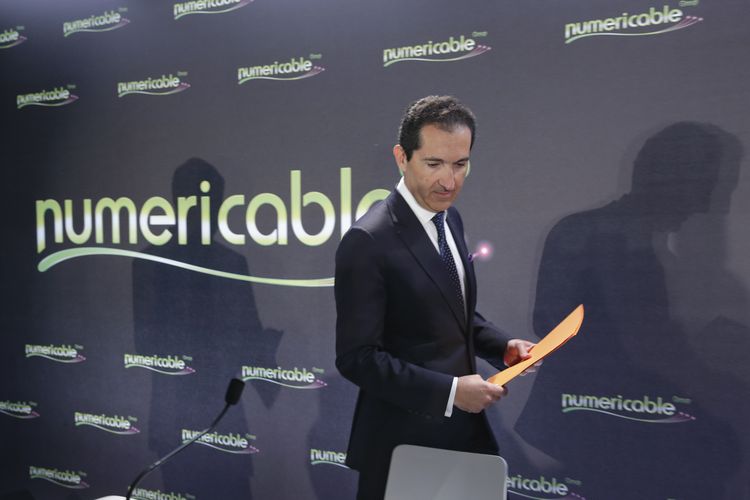Altice-backed Numericable gave a master-class in how to manage a banking syndicate when it clocked up a record high-yield bond offering to fund its US$23.3bn acquisition of SFR.
In just over a year, Patrick Drahi has transformed Altice into a major player on the European telecoms scene, and led it on to the global stage with its first US cable acquisition. But what stands out is the company’s expertise in marshalling a motivated banking syndicate to match its founder’s ambition and re-set the bar for jumbo acquisition financings.
Between April 2014 and January 2015, Numericable and Altice raised a combined US$22bn in the bond markets, amassing total orders of US$160bn as Drahi acquired French mobile company SFR from French conglomerate Vivendi and Portugal Telecom from Oi.
Numericable, in which Altice holds a 70% stake, may never have won the battle with Bouygues Telecom for control of SFR, the French mobile business of Vivendi, last year without a committed and flexible banking group.
“Altice has built through acquisition and it likes to move fast and secure quick commitments from its banks,” said one senior lending source to the company. “Also, we know they don’t waste time on deals that only have a small chance of success, so that makes it easier for us to commit.”
Altice CFO Dennis Okhuijsen’s strategy was to hire banks on an exclusive basis, which increased their motivation and also weakened the ability of Bouygues to mobilise firepower. Thanks to his experience in the sector ‒ he was corporate treasurer of cable giant Liberty Global before joining Altice in 2012 ‒ Okhuijsen had relationships with the top high-yield debt providers.
The decision to split the financing between Numericable and Altice was taken because Vivendi held a 20% stake in the new company Numericable SFR and didn’t want Numericable to exceed an agreed leverage threshold.
“Four times was too high, they were looking for three times, so they raised the rest through Altice,” said one member of the banking syndicate.
The deal hit the market just as the Ukraine crisis was escalating, but the geopolitical instability appeared to play into Altice’s hands, as investors favoured big deals with strong liquidity.
Making history
Altice and Numericable made history not just by printing the biggest high-yield deal on record but also by securing an order book of US$100bn, the biggest in the history of capital markets, as 99 out of the top 100 high-yield investors participated in the transaction and 400 accounts in all.
The US dollar and euro deal was initially announced on April 14 as €6.04bn-equivalent of five-year non-call two-year notes, eight-year non-call three and 10-year non-call five notes from Numericable and €4.15bn-equivalent of eight year non-call three notes from Altice. In addition, the company announced a €6.55bn loan package.
The flood of orders for the bonds persuaded the banks to increase the size of the Numericable bond issue at the expense of the loan packages. The Altice holdco debt was whispered at 200bp back of the Numericable eight-year tranche, equating to low 8% pricing.
Altice had access to swaps from all eight banks in the syndicate so was not tied to a particular currency, giving banks’ licence to secure the best price and flexibility over duration. With dollars offering the cheapest financing, the bookrunners scaled down the euro tranches, which in turn sent demand sky-high, and pushed down the price to the company.
That also meant some disgruntled euro investors walked away empty-handed. The banks were back-stopping the long-term capital at a certain rate, so as long as they achieved a price below that level they had flexibility to use either bonds or loans. As a result, the deal was re-cut several times.
With regards to the three dollar tranches from Numericable, the five-year deal was upsized from US$920m to US$1.8bn, and finally to US$2.4bn, with pricing at 4.87%. The eight-year deal began at US$2bn, was raised to US$4.2bn and then reduced to US$4bn before printing at 6%.
The 10-year deal was downsized to US$1.35bn from US$2bn, ending at 6.25%. The Numericable US$2.4bn five-year tranche was priced at 4.875%, the US$4bn eight-year came at 6% and the US$1.375bn 10-year tranche – downsized from US$2bn ‒ came at 6.25%. The company also priced a €1bn eight-year tranche, which was upsized to €1.6bn before being reduced, at 5.375% and €1.25bn of 10-year notes – upsized from €1bn ‒ at 5.625%. A proposed €500m five-year tranche was dropped.
Back in the market
The Altice US$2.9bn bond was priced at 7.75%, with the €2.075bn bond at 7.25%. JP Morgan was lead-left bookrunner on the Numericable opco bond, while Goldman Sachs was lead-left on the Altice holdco bond. The pair were global co-ordinators on both tranches, along with Deutsche Bank, which was also lead-left on the loan.
Altice returned to the dollar market again in January 2015 with a US$5.3bn-equivalent bond backing its acquisition of Portugal Telecom. While the order book was not as big, the deal enjoyed a higher level of oversubscription and enabled the leads to tighten pricing and leave almost nothing on the table.
This time, Altice raised around 65% of the acquisition financing at Altice International, with the remaining 35% raised at the listed Altice SA holdco.
Altice International priced its 8NC3 senior secured notes at a 6.625% yield on the US$2.06bn tranche and at 5.25% on the €500m tranche. Its US$385m 10NC5 senior notes were priced at a 7.625% yield. International also raised a €841m-equivalent term loan. Altice SA, meanwhile, priced a 10NC5 senior bond at 7.625% on the US$1.48bn tranche and 6.25% on the €750m tranche.
Goldman Sachs was lead-left bookrunner on the Altice International deal and JP Morgan was lead-left on the Altice SA deal.
Altice shows no sign of stopping its acquisition spree. Its US$9.1bn acquisition of US cable operator Suddenlink provides an entry into the US market, where it wants to generate half of its revenues in future. Meanwhile, it was in early-stage talks to acquire Time Warner Cable before Charter Communications bought the business for US$55bn.
Altice has a history of buying under-developed businesses and then increasing margins through a rigorous cost-cutting process, giving it a strong appeal to credit investors who have enjoyed strong returns from the telecoms sector. However, with three deals under its belt in the last year, Altice faces a big execution challenge before pressing ahead with plans to earn half of its revenues from the US.
Analysts at Standard & Poor’s said Altice should integrate Suddenlink before continuing on its acquisition spree. “We think this acquisition could create some challenges for management at group level, as it will be entering a new market with a very different commercial environment to European cable markets,” they said.
“These challenges are heightened as this acquisition comes during a period when Altice’s management is focusing much of its attention on other substantial recent acquisitions.”
To see the digital version of this report, please click here
To purchase printed copies or a PDF of this report, please email gloria.balbastro@thomsonreuters.com

